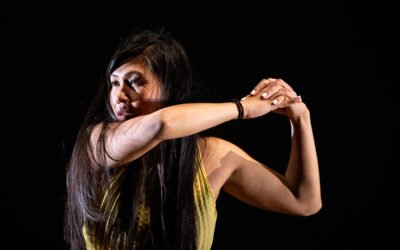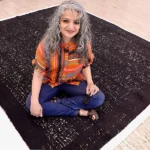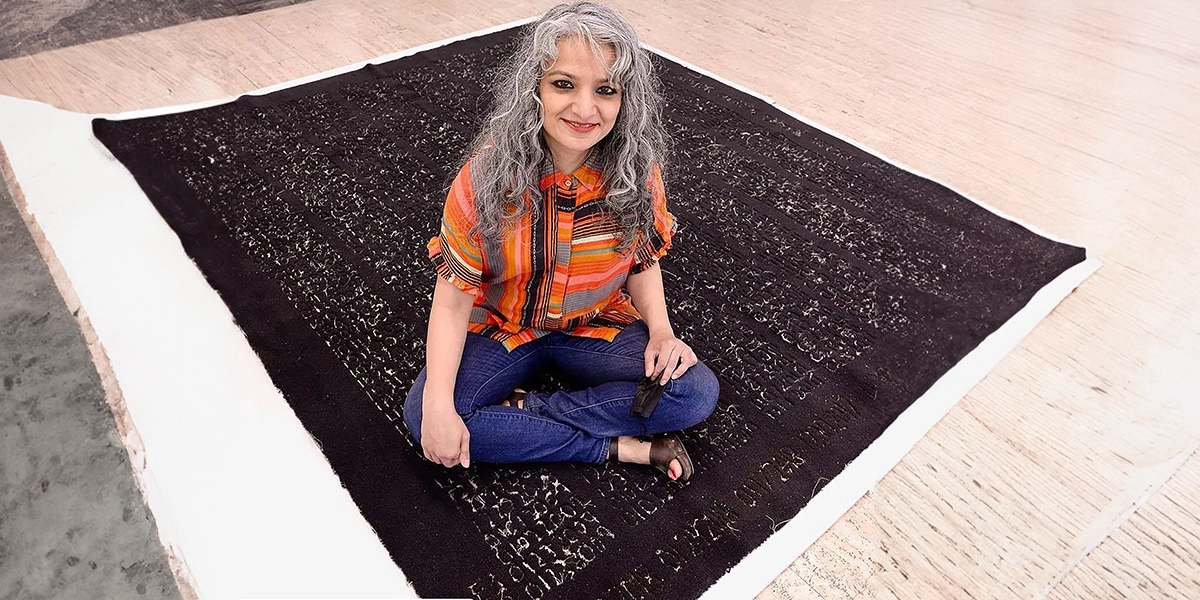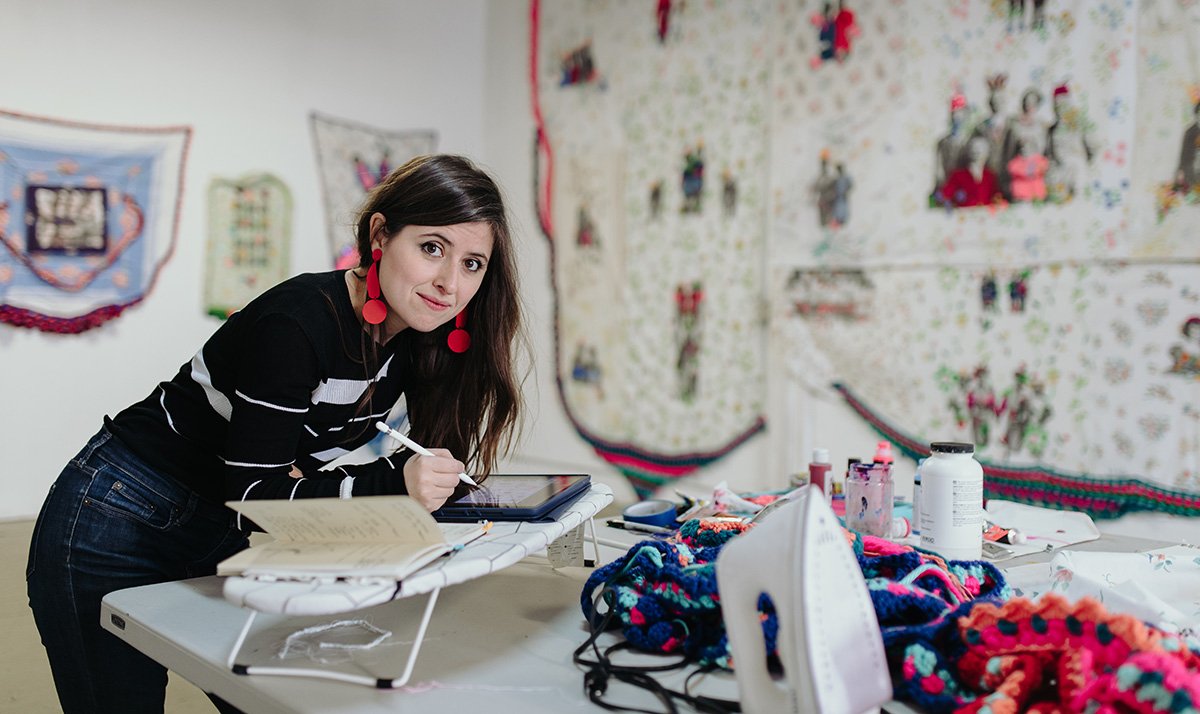Jennie Wood Shares the Stories That Shaped Their Identity and Inspired Award-Winning Graphic Novels

Exploring Friendship, Identity, and Creative Growth Through Graphic Novels and Music
Jennie Wood discusses the inspiration behind Paper Planes, the evolution of Flutter, and how storytelling and music helped shape their identity and artistic path.
Jennie Wood is a creative force whose voice continues to shape the landscape of contemporary young adult literature and graphic storytelling. As a non-binary author, musician, and dedicated animal rescue volunteer, Jennie brings an unmatched depth of empathy and nuance to their work. Their award-winning graphic novel Paper Planes is a powerful meditation on friendship, identity, and grief, resonating with readers through its raw emotional honesty and beautifully rendered characters. Likewise, the Flutter series—centred on a shape-shifting protagonist—pushed boundaries in LGBTQ storytelling, offering readers an authentic exploration of gender and self-discovery.
With a body of work that spans poignant fiction, socially relevant anthologies, and genre-defying collaborations, Jennie has proven to be not just a gifted storyteller, but a cultural contributor helping to expand representation and dialogue in literature. Their novel A Boy Like Me remains a groundbreaking work a decade on, and their involvement in projects like Love is Love and Tales for a HalloweeNight highlights their versatility across genres and formats.
A fearless storyteller, Jennie Wood brings emotional depth, authenticity, and originality to every project, enriching the literary and graphic novel world with inclusive, heartfelt narratives.
In this exclusive interview with Mosaic Digest, Jennie reflects on their creative journey—from the personal experiences behind Paper Planes to the liberating discovery of identity through Flutter, and how music and professional life intersect with their storytelling craft. It’s a conversation rich with insight, heart, and a celebration of stories that matter.
Your latest graphic novel, “Paper Planes,” explores the complexities of friendship and identity. What inspired you to tell this particular story, and how does it reflect your own experiences or observations?
The opportunity to write Paper Planes came soon after I found out about the death of a grade school friend. She and I hadn’t stayed in touch as adults. In fact, we drifted apart in high school. She came from a wealthy family. I did not. Those class differences really factor in as you get into high school in terms of who you’re friends with and what you do when you’re not in school. For example, I worked a job on the weekends while the wealthier kids went skiing. I learned to play tennis against an abandoned building while the other kids on the tennis team got lessons at the country club. All of this was on my mind when I got the opportunity to write Paper Planes.
“Flutter” has been recognized as one of the best LGBTQ graphic novels. How did creating a shape-shifting protagonist allow you to explore themes of gender and identity in a unique way?
Lily shape-shifting back and forth between herself and a boy allowed me to explore all the ways in which girls and boys are treated differently. Also, it allowed me personally to realize that I didn’t identify with being a girl or a boy. Writing Flutter as well as A Boy Like Me led directly to me coming out as non-binary. I’m so grateful to both projects for helping me figure out my own identity.
You’ve contributed to several anthologies, including the Eisner award-winning “Love is Love.” How do collaborative projects like these influence your approach to storytelling?
Writing a short story for an anthology is a wonderful opportunity to try something new. For example, I wasn’t sure I’d enjoy writing horror when I got the chance to write for the Tales For A HalloweeNight anthology. I can’t even watch a scary movie by myself at night! How can I write something scary?! Now multiple anthologies later, I love writing horror. So, anthologies have definitely helped me expand my storytelling.
As both an author and a musician, how do these two creative outlets intersect for you? Do you find that music influences your writing or vice versa?
Music has always influenced my writing. I learned storytelling from a young age by listening to such phenomenal songwriters as Natalie Merchant, Michael Stipe, Tom Waits, Patti Smith, and Bruce Springsteen. I’d listen to their songs over and over, studying how they’d let the story unfold over the course of a song.
Sometimes a song will directly inspire a story for an anthology or a full length project. An example – I’ve always loved the R.E.M. song, “Gardening At Night.” In 2019, I was looking to write a story for the Tales for a HalloweeNight anthology. One evening, a friend and I went to the Isabella Stewart Gardner Museum. Walking around that museum at night, I knew I had to set a horror story there. Because it was the Gardner, “Gardening at Night” popped into my head. (That’s just how my brain works.) The story was born in that moment.
For the longer projects, some of my characters are musicians. I like to write songs from their point of view, even if those songs / lyrics don’t make it into the story. It’s a great way to flesh out the character.
Your novel “A Boy Like Me” was a finalist for multiple awards and is celebrating its 10th anniversary. Looking back, how do you feel the conversation around transgender narratives in young adult literature has evolved since its publication?
There are many more books that feature trans characters than there were a decade ago when A Boy Like Me was published. There are more books by trans authors telling their own stories. And there’s a wider range of stories.
Also, I’ve watched over the last ten years more people becoming more aware and supportive of trans issues. Unfortunately, there’s also intense hate and backlash due to a right-wing agenda that’s decided to vilify and attack queer people, especially trans individuals. So, it’s more important than ever to support and amplify trans voices and their stories.
Balancing your role at the American Academy of Arts & Sciences with your creative endeavors must be challenging. How do you navigate these different aspects of your professional life, and do they ever inform each other?
They do inform each other! I do a lot of writing for the Academy. Even though the writing I do there is different, it helps me continue to grow as a writer and communicator. Also, being a writer can feel isolating so my work at the Academy helps balance that out because it’s a collaborative environment.
I think the key when balancing more than one professional role is being clear that one professional role isn’t more important than the other. All of the work is equally important. Therefore, everything I do gets the same level of focus and attention.













